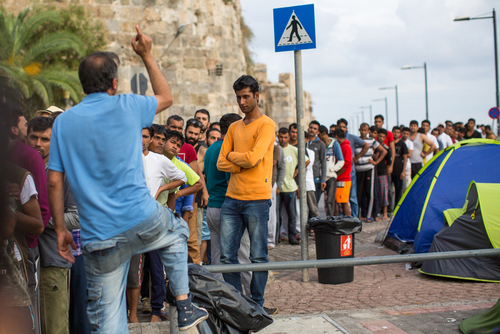The new EU Pact on Migration and Asylum, which is expected to flood Europe with as many as 75 million new migrants, was approved on Wednesday by the European Parliament’s LIBE committee.
One of the key provisions of the migrant pact is that it contains a migrant distribution system that has proven ineffectual since 2015, Róbert Gönczi, an analyst at Hungary’s Migration Research Institute, told daily Magyar Nemzet.
A number of European conservatives, such as Hungarian Prime Minister Viktor Orbán, have warned against the migrant pact, saying it will force countries like Hungary to accept migrants or face a severe financial penalty.
[pp id=94694]
“The next question is how many they will force on us. Now they are deciding that. So they are creating rules that give Brussels the right to say how many migrants they will distribute,” Orbán criticized last year. “So, several countries have indicated that they do not agree. We do not want to implement it. In the end, we are facing a very unpleasant turn of events here,”
Marine Le Pen, the leader of National Rally’s parliamentary wing, earlier predicted that the migration pact would bring in 75 million migrants into the EU.
[pp id=100840]
“It is an organized plan of submersion of Europe and the nations which compose it,” said Le Pen. “It is a real pact with the devil that will lead to the suicide of Europe,“ she declared during a press conference at her party’s headquarters in Nanterre in 2020.
The migration pact states that member states can choose between accepting asylum seekers or pay a financial penalty that costs up to €25,000 per migrant. The EU often claims that diversity is the continent’s strength and that continuous waves of migrants are an economic boon. Based on this logic, Hungary’s Orbán said that Western European nations should be scrambling to accept more migrants, not distribute them to countries like Hungary. And yet, the bloc claims that member states that do not accept migrants must pay a fine to help subsidize the cost of these migrants.
The new migration pact has four main points, of which one is the one that can bring about really big changes in Hungary, said Gönczi in response to a question from our newspaper.
“This is the restructuring or even abolition of the Dublin system and the establishment of a new solidarity system, the exact limits of which have not yet been defined,” he said.
“This would look something like each state determining for itself how it could contribute to the management of migration at the EU level. However, there is a worrying element to this, as it would presumably include the distribution of migrants within the EU’s borders,” the analyst pointed out.
[pp id=81581]
Róbert Gönczi said that the so-called quota migrant system has been in the European political discourse since 2015, but it does not seem to be the most effective solution, he stressed. Within the Schengen Area, it is difficult to control who goes where.
The analyst cited a case study by the Migration Research Institute as an example, which showed that the three Baltic states had previously accepted quota migrants, but that 90 percent of them disappeared from the three countries within a year and later turned up in Sweden, Germany and other Western European states.
“The redistribution system could also create intra-EU flows from the countries where these migrants have been relocated to the countries where they actually want to leave, as typically the destination countries have not changed,” he stressed. However, it would now be necessary for other EU countries to welcome these migrants, refugees and asylum seekers, he added. The real problem is that the reinforcement of the EU’s external borders would be less or not at all, which is what is really needed.
“In addition, the biggest impact of the pact would be to transform the protection of external borders, but the details of this remain unclear,” said the researcher.






